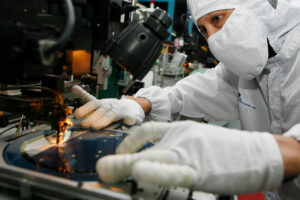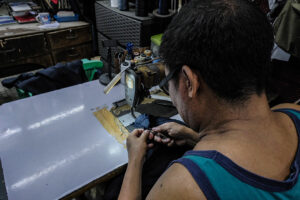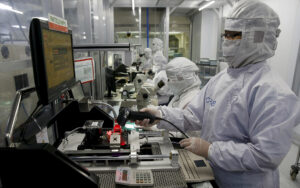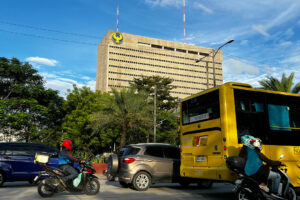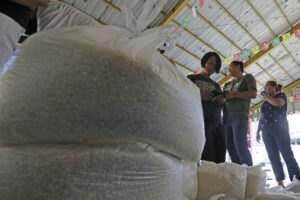By Beatriz Marie D. Cruz, Reporter
FACTORY ACTIVITY in the Philippines expanded at a slower pace in May as employment fell for the first time in five months, S&P Global said on Monday.
The S&P Global Philippines Manufacturing Purchasing Managers’ Index (PMI) stood at 51.9, slightly down from 52.2 in April, indicating “modest improvement” in factory activity.
A PMI reading above 50 signifies improved operating conditions from the previous month, while a reading below 50 shows the opposite.
“The [Philippine] manufacturing sector continued to report further gains midway through the second quarter, with growth sustained in new orders and output,” Maryam Baluch, an economist at S&P Global Market Intelligence, said in the report.
“However, firms struggled to maintain their workforce numbers with job shedding noted for the first time in five months.”
The Philippines’ PMI reading remained the second-fastest among four Association of Southeast Asian Nations member countries in May, behind Indonesia and Myanmar (52.1) and ahead of Vietnam (50.3).
As of publishing time, no PMI data for Thailand and Malaysia were available.
For the Philippines, S&P Global noted total sales growth continued in May, although this “eased fractionally” from April.
“Nonetheless, a further improvement in underlying demand trends and an expanding customer base helped stretch the current run of increase to nine consecutive months,” it said.
New export orders increased for a fourth straight month and “at a pace most pronounced since December 2016,” S&P Global said.
“Growth in new sales from abroad was widely attributed to improved demand trends in key export markets and new client wins,” it added.
Strong growth sales pushed factories to increase their production, S&P Global said. Factory output grew at the fastest pace in the year to date.
Even as production grew, S&P Global noted that manufacturing jobs dropped for the first time since December 2023.
“The rate of decrease was the fastest in nine months, with firms largely attributing this to voluntary leavers,” it said. “Backlogs, though, continued to fall, indicating that many companies were equipped to handle the sustained rise in demand.”
Meanwhile, manufacturers continued to increase purchases of inputs for a sixth straight month. Pre-production inventories also expanded at the fastest pace in 13 months.
“Stocks of finished goods were also raised in May, though the rate of growth was the weakest in the current three-month sequence of expansion,” S&P Global added.
Input prices dipped for the first time since April 2020 as some companies said they switched to “more competitively priced” suppliers.
“However, charges continued to rise, indicating that firms wished to maintain and build their margins,” Ms. Baluch said.
S&P Global said Filipino manufacturers were hopeful of improved demand and plan to expand operations and launch new products. It noted that expectations for the 12-month outlook for output rose for the first time in five months.
“Subdued inflationary pressures and a further improvement in the demand picture indicates that economic growth will likely be sustained in the coming months. Reflecting positive sentiment, optimism picked up to a nine-month high,” Ms. Baluch said.
PMI measures a country’s manufacturing activity based on the weighted average of five indices — new orders (30%), output (25%), employment (20%), suppliers’ delivery times (15%) and stocks of purchases (10%).
“The recovery in external demand may still be attributable to the cyclical rebound in global electronics trade. The slower hiring may be a one-off. Prints for forthcoming months may improve by July,” Bank of the Philippine Islands Lead Economist Emilio S. Neri, Jr. said in a Viber message.
Security Bank Corp. Chief Economist Robert Dan J. Roces said in a Viber message the strong external demand can be traced to the “ongoing recovery in major export markets, weakening Philippine peso making exports more competitive, growth in digitalization and e-commerce driving demand for electronics, a rebound in global travel and tourism, and a generally brighter economic outlook.”
However, supply chain bottlenecks, rising shipping costs, and a possible slowdown in key markets could hamper growth in the manufacturing sector in the coming months, Mr. Roces added.
Union Bank of the Philippines, Inc. Chief Economist Ruben Carlo O. Asuncion said some manufacturers might have lacked the capacity to meet the uptick in demand.
“Some firms may have not been able to respond by adding more people to work and meet the higher demand,” he said in a Viber message.
In an e-mail, Rizal Commercial Banking Corp. Chief Economist Michael L. Ricafort said slower manufacturing activity in May could be partly attributed to the heatwave that led to some reduction in business activities, as well as a tight power supply.

